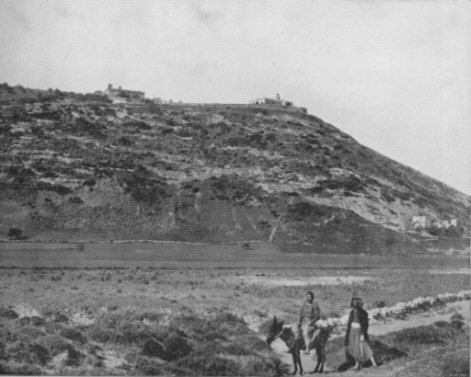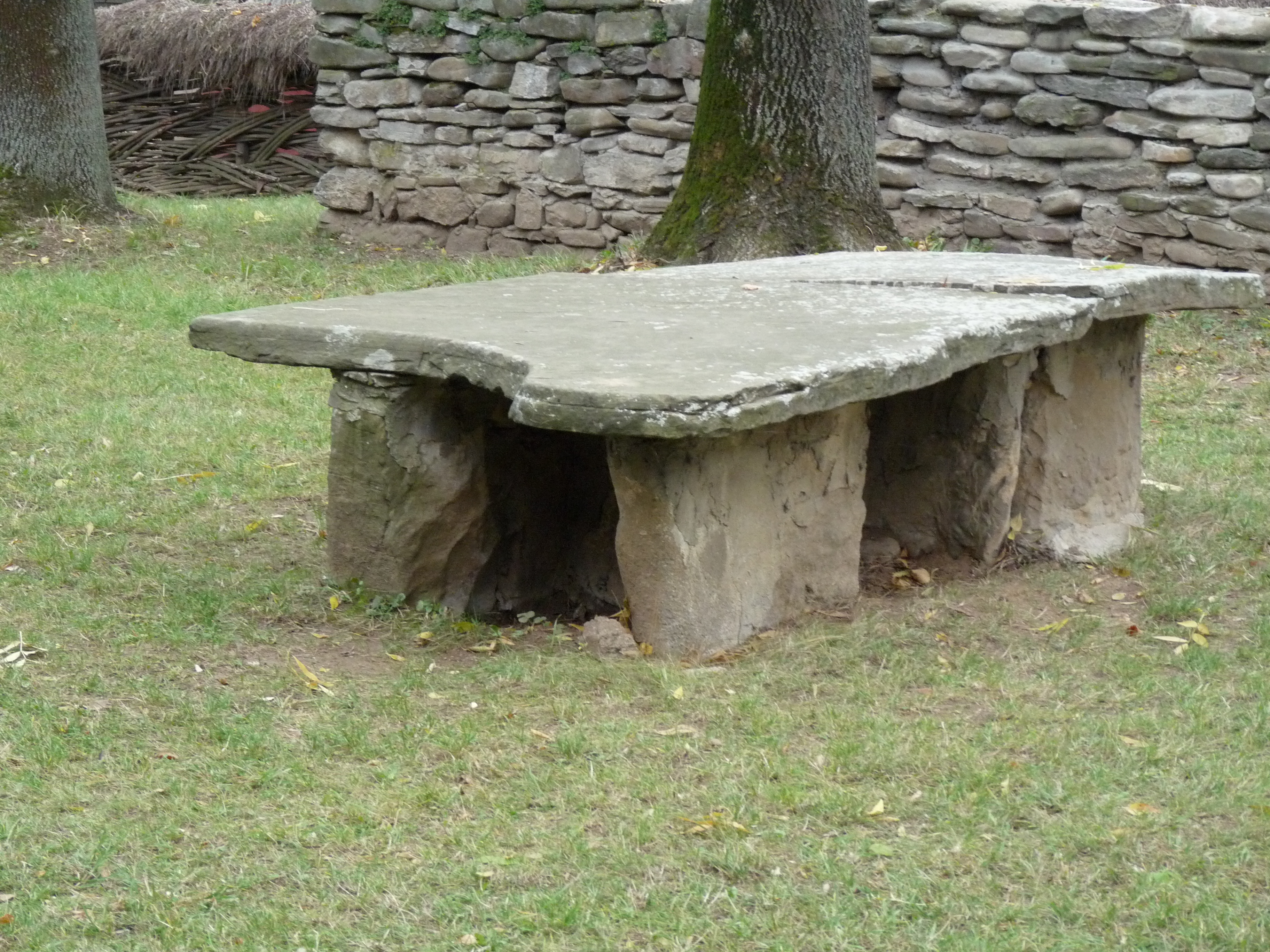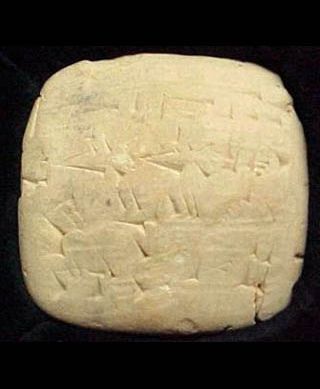|
Raqefet Cave
Raqefet Cave (''Cyclamen Cave'') is a Late Natufian archaeological site located in Mount Carmel in the north of Israel. It was discovered in 1956. The site indicates plants were already used as food at Raqefet, before the advent of agriculture. History Remains in one of the chambers of the cave suggest the production of beer during the occupation of the cave. The earliest archaeological evidence of fermentation consists of 13,000-year-old residues of a beer with the consistency of gruel, used by the semi-nomadic Natufians for ritual feasting, at the Raqefet Cave. Earlier levels at Raqefet include remains from the Levantine Aurignacian. Earlier Mousterian The Mousterian (or Mode III) is an archaeological industry of stone tools, associated primarily with the Neanderthals in Europe, and to the earliest anatomically modern humans in North Africa and West Asia. The Mousterian largely defines the ... remains were also found at Site 187. In 2020, incised slabs were discover ... [...More Info...] [...Related Items...] OR: [Wikipedia] [Google] [Baidu] |
Israel
Israel (; he, יִשְׂרָאֵל, ; ar, إِسْرَائِيل, ), officially the State of Israel ( he, מְדִינַת יִשְׂרָאֵל, label=none, translit=Medīnat Yīsrāʾēl; ), is a country in Western Asia. It is situated on the Eastern Mediterranean, southeastern shore of the Mediterranean Sea and the northern shore of the Red Sea, and Borders of Israel, shares borders with Lebanon to the north, Syria to the northeast, Jordan to the east, and Egypt to the southwest. Israel also is bordered by the Palestinian territories of the West Bank and the Gaza Strip to the east and west, respectively. Tel Aviv is the Economy of Israel, economic and Science and technology in Israel, technological center of the country, while its seat of government is in its proclaimed capital of Jerusalem, although Status of Jerusalem, Israeli sovereignty over East Jerusalem is unrecognized internationally. The land held by present-day Israel witnessed some of the earliest human occup ... [...More Info...] [...Related Items...] OR: [Wikipedia] [Google] [Baidu] |
Upper Galilee
The Upper Galilee ( he, הגליל העליון, ''HaGalil Ha'Elyon''; ar, الجليل الأعلى, ''Al Jaleel Al A'alaa'') is a geographical-political term in use since the end of the Second Temple period. It originally referred to a mountainous area straddling what today is northern Israel and southern Lebanon. The boundaries of this area were the Litani River in the north, the Mediterranean Sea in the west, the Lower Galilee in the south (from which it is separated by the Beit HaKerem Valley), and the upper Jordan River and the Hula Valley in the east. According to the 1st-century historian Josephus, the bounds of Upper Galilee stretched from Bersabe in the Beit HaKerem Valley to Baca (Peki'in) in the north. The extent of this region is approximately 470 km². However, in present-day Israeli usage, the toponym mainly refers only to the northern part of the Galilee that is under Israeli sovereignty. That is, the term today does not include the portion of Southern Le ... [...More Info...] [...Related Items...] OR: [Wikipedia] [Google] [Baidu] |
Middle Paleolithic
The Middle Paleolithic (or Middle Palaeolithic) is the second subdivision of the Paleolithic or Old Stone Age as it is understood in Europe, Africa and Asia. The term Middle Stone Age is used as an equivalent or a synonym for the Middle Paleolithic in African archeology. The Middle Paleolithic broadly spanned from 300,000 to 30,000 years ago. There are considerable dating differences between regions. The Middle Paleolithic was succeeded by the Upper Paleolithic subdivision which first began between 50,000 and 40,000 years ago. Pettit and White date the Early Middle Paleolithic in Great Britain to about 325,000 to 180,000 years ago (late Marine Isotope Stage 9 to late Marine Isotope Stage 7), and the Late Middle Paleolithic as about 60,000 to 35,000 years ago. According to the theory of the recent African origin of modern humans, anatomically modern humans began migrating out of Africa during the Middle Stone Age/Middle Paleolithic around 125,000 years ago and began to rep ... [...More Info...] [...Related Items...] OR: [Wikipedia] [Google] [Baidu] |
Mousterian
The Mousterian (or Mode III) is an archaeological industry of stone tools, associated primarily with the Neanderthals in Europe, and to the earliest anatomically modern humans in North Africa and West Asia. The Mousterian largely defines the latter part of the Middle Paleolithic, the middle of the West Eurasian Old Stone Age. It lasted roughly from 160,000 to 40,000 BP. If its predecessor, known as Levallois or Levallois-Mousterian, is included, the range is extended to as early as 300,000–200,000 BP. The main following period is the Aurignacian (c. 43,000–28,000 BP) of ''Homo sapiens''. Naming The culture was named after the type site of Le Moustier, three superimposed rock shelters in the Dordogne region of France. Similar flintwork has been found all over unglaciated Europe and also the Near East and North Africa. Handaxes, racloirs, and points constitute the industry; sometimes a Levallois technique or another prepared-core technique was employ ... [...More Info...] [...Related Items...] OR: [Wikipedia] [Google] [Baidu] |
Levantine Aurignacian
The Levantine Aurignacian (35,000-29,000 BP, calibrated, 32,000-26,000 BP, non-calibrated) is an Upper Paleolithic culture of the Near-Eastern Levant that evolved from the Emiran culture. It was named so because of the similarity of stone tools with the Aurignacian culture in Europe. The Levantine Aurignacian used to be called Lower and Upper Antelian in old sources, from the site of Wadi Antelias in Lebanon. The most important innovation in this period is the incorporation of some typical elements of Aurignacian, like some types of burins and narrow blade points that resemble the European type of Font-Yves. Levantine Aurignacian period Similarities with Aurignacian are found in the manufacture of blades and in the processing of bone tools. The Levantine Aurignacian follows chronologically the Emiran and Early Ahmarian in the same area of the Near East, and closely related to them. The carving of a horse with traces of a layer of ocher painting from HaYonim Cave, now in ... [...More Info...] [...Related Items...] OR: [Wikipedia] [Google] [Baidu] |
Natufian
The Natufian culture () is a Late Epipaleolithic archaeological culture An archaeological culture is a recurring assemblage of types of artifacts, buildings and monuments from a specific period and region that may constitute the material culture remains of a particular past human society. The connection between thes ... of the Levant, dating to around 15,000 to 11,500 years ago. The culture was unusual in that it supported a sedentary or semi-sedentary population even before the introduction of agriculture. The Natufian communities may be the ancestors of the builders of the first Neolithic settlements of the region, which may have been the earliest in the world. Some evidence suggests deliberate cultivation of cereals, specifically rye, by the Natufian culture, at Tell Abu Hureyra, the site of earliest evidence of agriculture in the world. The world's oldest known evidence of the production of bread-like foodstuff has been found at Shubayqa 1, a 14,400-year-old site in Jorda ... [...More Info...] [...Related Items...] OR: [Wikipedia] [Google] [Baidu] |
Mount Carmel
Mount Carmel ( he, הַר הַכַּרְמֶל, Har haKarmel; ar, جبل الكرمل, Jabal al-Karmil), also known in Arabic as Mount Mar Elias ( ar, link=no, جبل مار إلياس, Jabal Mār Ilyās, lit=Mount Saint Elias/ Elijah), is a coastal mountain range in northern Israel stretching from the Mediterranean Sea towards the southeast. The range is a UNESCO biosphere reserve. A number of towns are situated there, most notably the city of Haifa, Israel's third largest city, located on the northern and western slopes. Etymology The word ''karmel'' means "garden-land" and is of uncertain origin. It is either a compound of ''kerem'' and ''el'', meaning "vineyard of God" or a clipping of ''kar male,'' meaning "full kernel." Martin Jan Mulder suggested a third etymology, that of ''kerem + l'' with the lamed a sufformative, but this is considered unlikely as evidence for the existence of a lamed sufformative is weak. Geography and geology The phrase "Mount Carmel" has been ... [...More Info...] [...Related Items...] OR: [Wikipedia] [Google] [Baidu] |
Beer
Beer is one of the oldest and the most widely consumed type of alcoholic drink in the world, and the third most popular drink overall after water and tea. It is produced by the brewing and fermentation of starches, mainly derived from cereal grains—most commonly from malted barley, though wheat, maize (corn), rice, and oats are also used. During the brewing process, fermentation of the starch sugars in the wort produces ethanol and carbonation in the resulting beer.Barth, Roger. ''The Chemistry of Beer: The Science in the Suds'', Wiley 2013: . Most modern beer is brewed with hops, which add bitterness and other flavours and act as a natural preservative and stabilizing agent. Other flavouring agents such as gruit, herbs, or fruits may be included or used instead of hops. In commercial brewing, the natural carbonation effect is often removed during processing and replaced with forced carbonation. Some of humanity's earliest known writings refer to the productio ... [...More Info...] [...Related Items...] OR: [Wikipedia] [Google] [Baidu] |
Gruel
Gruel is a food consisting of some type of cereal—such as ground oats, wheat, rye, or rice—heated or boiled in water or milk. It is a thinner version of porridge that may be more often drunk rather than eaten. Historically, gruel has been a staple of the Western diet, especially for peasants. Gruel may be made from millet, hemp, barley, or, in hard times, from chestnut flour or even the less bitter acorns of some oaks. Gruel has historically been associated with feeding the sick and recently weaned children. ''Gruel'' is also a colloquial expression for any watery food of unknown character, e.g., pea soup. Gruel has often been associated with poverty, with negative associations attached to the term in popular culture, as in the Charles Dickens novel ''Oliver Twist''. History Gruel was the staple food of the ancient Greeks, for whom roasted meats were the extraordinary feast that followed sacrifice, even among heroes, and "In practice, bread was a luxury eaten only in to ... [...More Info...] [...Related Items...] OR: [Wikipedia] [Google] [Baidu] |
Stone Slab
A stone slab is a big stone, flat and relatively thin, often of rectangular or almost rectangular form. They are generally used for paving floors, for covering walls or as headstones. In dolmens Most dolmen constructions were built using stone slabs of big dimensions. Their architecture often includes a corridor of access that can be constructed using stone slabs or dry stones. The burial chamber, with variable shapes (e.g. rectangular, polygonal, oval, circular) can also be preceded by an anteroom. In some dolmens, the entrance has a door cut into one or more vertical stone slabs. In construction The main applications of the slabs as material of construction are for pavings and in the construction of roofs. They can be employed for other uses, among them: * Balconies formed from a slab * Dry stone constructions of: walls, caves, rooms. * The base of some fireplaces are built with stone slabs (a big one or some smaller together). * In religious altars, the ''altar stone'' ca ... [...More Info...] [...Related Items...] OR: [Wikipedia] [Google] [Baidu] |
History Of Beer
Beer is one of the oldest drinks humans have produced. The first chemically confirmed barley beer dates back to the 5th millennium BC in modern-day Iran, and was recorded in the written history of ancient Egypt and Mesopotamia and spread throughout the world. As almost any cereal containing certain sugars can undergo spontaneous Brewing#Fermenting, fermentation due to wild yeasts in the air, it is possible that beer-like drinks were independently developed throughout the world soon after a tribe or culture had domesticated cereal. Chemical tests of ancient pottery jars reveal that beer was produced as far back as about 7,000 years ago in what is today Iran. This discovery reveals one of the earliest known uses of fermentation and is the earliest evidence of brewing to date. Author Thomas Sinclair says in his book, "Beer, Bread, and the Seeds of Change: Agriculture's Imprint on World History" that the discovery of beer may have been an accidental find. The precursor to beer was ... [...More Info...] [...Related Items...] OR: [Wikipedia] [Google] [Baidu] |
Prehistoric Sites In Israel
Prehistory, also known as pre-literary history, is the period of human history between the use of the first stone tools by hominins 3.3 million years ago and the beginning of recorded history with the invention of writing systems. The use of symbols, marks, and images appears very early among humans, but the earliest known writing systems appeared 5000 years ago. It took thousands of years for writing systems to be widely adopted, with writing spreading to almost all cultures by the 19th century. The end of prehistory therefore came at very different times in different places, and the term is less often used in discussing societies where prehistory ended relatively recently. In the early Bronze Age, Sumer in Mesopotamia, the Indus Valley Civilisation, and ancient Egypt were the first civilizations to develop their own scripts and to keep historical records, with their neighbors following. Most other civilizations reached the end of prehistory during the following Iron Age. ... [...More Info...] [...Related Items...] OR: [Wikipedia] [Google] [Baidu] |



.jpg)
_1928_Natufian_culture_discovery.jpg)


.jpg)


